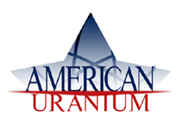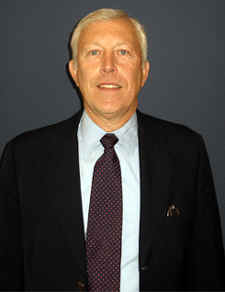CEOCFO-Members Login
Become A Member!
|
This is a printer friendly page!
A strong uranium market will allow American Uranium to accomplish
its goal of bringing the Pinetree-Reno Creek property into production in four or five
years

Resource
Uranium
(AUUM.OB-OTC: BB)
American Uranium Corp.
5 locust Road
Orleans, MA 02653
USA
Phone: 1-877-724-7123

Robert A. Rich
Chief Executive Officer and CFO
Interview conducted by:
Walter Banks, Publisher
CEOCFOinterviews.com
Published – August 3, 2007
BIO:
American Uranium’s President is Dr. Robert Rich, who has over 30 years experience in
the uranium industry, working in North America, Europe, Australia and Asia. He has been
involved in the exploration and development of uranium projects, the marketing,
conversion, and enrichment of uranium, nuclear fuel transportation, and spent fuel
disposal services for nuclear power plants. Dr. Rich has recently worked for such
companies as BHP Billiton, WMC Resources, Sumitomo Corp, Ontario Power Gen, and several
major US utilities.
Company Profile:
American Uranium Corporation is a pure U.S. uranium investment opportunity, which is
currently focused on bringing its flagship project, the Pinetree Reno-Creek Property, into
production within 5 years.
CEOCFO: Mr. Rich,
how long have you been with American Uranium and what is your vision for the company?
Mr. Rich: “American Uranium is a new company that
basically began as a uranium company in March 2007, even though it evolved from a
predecessor company that existed a year or two before that. I joined American Uranium this
spring and have been the chief executive officer since American began its new existence as
a uranium company. I am pleased to be a part of the Company because I think there are a
couple of points that make American Uranium Corp different from many of the other junior
uranium companies in the market at the present time. We are a pure uranium play and many
investors are looking for pure uranium plays. Although there are many uranium juniors,
there are only a few pure United States uranium plays. By that I mean an entity that is
registered in the U.S., traded in the U.S. market, and has its emphasis exploring,
developing and mining U.S. uranium properties.”
CEOCFO: Did you
divest yourself of your Canadian properties?
Mr. Rich: “No, we still hold the copper prospect
in British Columbia. It is inactive at this point, and is a relic of a predecessor company
Alpine Resources.”
CEOCFO: So you
are now focused exclusively on the United States.
Mr. Rich: “Yes, we are focused on the U.S. and on
uranium. It is not to say that we will not do something in BC, but at the present,
not.”
CEOCFO: Please
tell us more about the U.S. property.
Mr. Rich: “The second point is that our intent to
become an operating uranium mining company. I know many other juniors do not necessarily
have that as a goal. What is going to make that possible is our flagship uranium property
in Wyoming, the Reno Creek property, which is a property that can be brought into
production in four or five years. It is In Situ Recovery (ISR) amenable and has been
brought to the point of full feasibility studies by at least two of the previous three
corporate owners. The property was not brought into production in the past because of
uranium market declines at the point that of decision-making. We do not have that
situation now. We have a strong uranium market with uranium prices well above our expected
full cost of production on a unit basis, so we plan to bring Reno Creek into production as
soon as possible.
Our main constraints there will be permitting and licensing, especially obtaining the U.S.
Nuclear Regulatory Commission license for ISR mining and processing. We will begin
licensing and permitting later this year. We are at the point now of trying to add some
additional properties to our land package in Wyoming. We are missing some nice
resource-bearing tracts that are adjacent to our current land. We are in negotiations for
both private leases and possible swaps or purchases from other juniors in order to round
out our property package. We are also in the process of gathering and analyzing historical
drill logs and other data, (including feasibility studies and processing plant designs)
which are available in various archives. We are trying to pull everything together because
the more we can learn from the tens of millions of dollars that have been spent by
previous owners, the less expensive our cost of bringing this property on line will be
going forward.”
CEOCFO: Why is
the U.S. the biggest uranium producer?
Mr. Rich: “Although the US is no longer the
world’s largest producer, it is a prime place to find, develop, and mine uranium
because there are lots of known resources from the last uranium boom waiting to be
consolidated, properly interpreted, and brought into production. There is a huge quantity
of known mineralization, probably an amount equal to all that has previously been mined.
The other thing is that the U.S. is a safe and predictable legal and regulatory
jurisdiction. We do not have political risks here; we don’t have groups running
around kidnapping executives and that sort of thing. Even though our regulatory process
can be slow, it is predictable and has been tested. Those are two big pluses. I think
there is an attractiveness in developing new energy resources in the U.S. from the
standpoint of national energy independence. This is something that might appeal to many
investors.”
CEOCFO: What
attracted you to the Pinetree-Reno Creek Property?
Mr. Rich: “I have known for years personally and
by word-of-mouth from knowledgeable industry people that the Pinetree-Reno Creek area is
probably the best known un-developed In Situ Recovery uranium property in America. What is
wonderful about this kind of mining is there is virtually no disturbance of the surface.
This means that surface land uses to a large extent can continue unabated, whether it is
cattle raising, antelope grazing, or other sorts of surface land uses, because all that
you have on the surface are a series of wells and pipes connecting the wells. Basically
what you do is pump oxygenated water down into the ground, the oxygenated water causes the
uranium in the ground to dissolve, and then you pump it out and pass it through ion
exchange columns and other processing to recover the leached uranium. This is really nice
because reclamation costs are relatively small, and capital costs are low compared to
normal underground or open-pit mining. The only significant reclamation that has to be
done other than pick up the surface plumbing, is to make sure you return aquifer (the
ground water in the uranium-bearing horizon) to its pre-mining condition. Because no
harmful chemicals are introduced, this is relatively simple. ISR mining does not
contaminate groundwater. It’s a nice “green” method for mineral
exploitation, and I like it.”
CEOCFO: You are
in step with the environmentalists then.
Mr. Rich: “Well yes, I am an
environmentalist.”
CEOCFO:
Excellent! That should make a lot of people happy.
Mr. Rich: “I am an outdoorsman and it’s hard
for an outdoorsman not to be an environmentalist because of all the things you love out
there.”
CEOCFO: Why is
there an increased need for uranium?
Mr. Rich: “Long-term demand for uranium continues
to increase because of improved nuclear plant operations and the construction of new power
reactors, but in recent years new mine production has only supplied about half of the
amount of uranium that is actually consumed. The rest has been mostly provided by utility
and government inventory that were built up when the previous nuclear power market crashed
in the early 1980’s. Now, those inventories are rapidly declining, so there is a huge
need to bring new mine production on line. I see supply shortages persisting for at least
the next five to ten years. During the past several years, the Spot Price of uranium has
run up from about $7 to well over $100 per pound U3O8. When one
looks for what is driving the spot market, there has been a lot of unusual demand in the
market since late 2001. That unusual demand is not driven by utility reactor consumption,
but rather utilities building inventory and by producers with production problems having
to buy from the market to deliver under utility contracts. Most importantly, the unusual
demand is being driven by investors and hedge funds that have until recent years never
participated in the uranium market, which in aggregate have accumulated quite large
uranium holdings. These unusual demands have aggravated what would have been a tight
supply/demand situation and made it really tight. So, that’s what drove up uranium
prices quicker and higher than might otherwise have been achieved. In the long-run you
have good solid growing demand from new nuclear power plants and life extensions of older
plants. All of that will continue to drive the market in a stable way in the long-term but
in the near-term these unusual demands have spiked the market.”
CEOCFO: You have
a company that is currently an exploration with an eye on actually going into production
and development; how are you funded?
Mr. Rich: “We have the Pinetree-Reno Creek
Property in a joint venture with Strathmore Minerals, so after we put in our initial cash
contribution over a number of years, then we’ll share development cost on a
sixty/forty basis. We’ll probably have to enter the market once or twice a year to
raise additional money either to bring this property along or to acquire new properties,
because we want to grow the Company. We don’t want to be a one-deposit company. I
think there are some good opportunities out there, and so we are going to need money for
both of those activities. We’ll probably raise additional funds through private
placements.”
CEOCFO: What
should investors remember about American Uranium?
Mr. Rich: “My take away line is American Uranium
is here to stay. We plan to be in the production business and grow this Company-- not just
mine the stock market.”
disclaimers
Any reproduction or further distribution of this
article without the express written consent of CEOCFOinterviews.com is prohibited.
|


